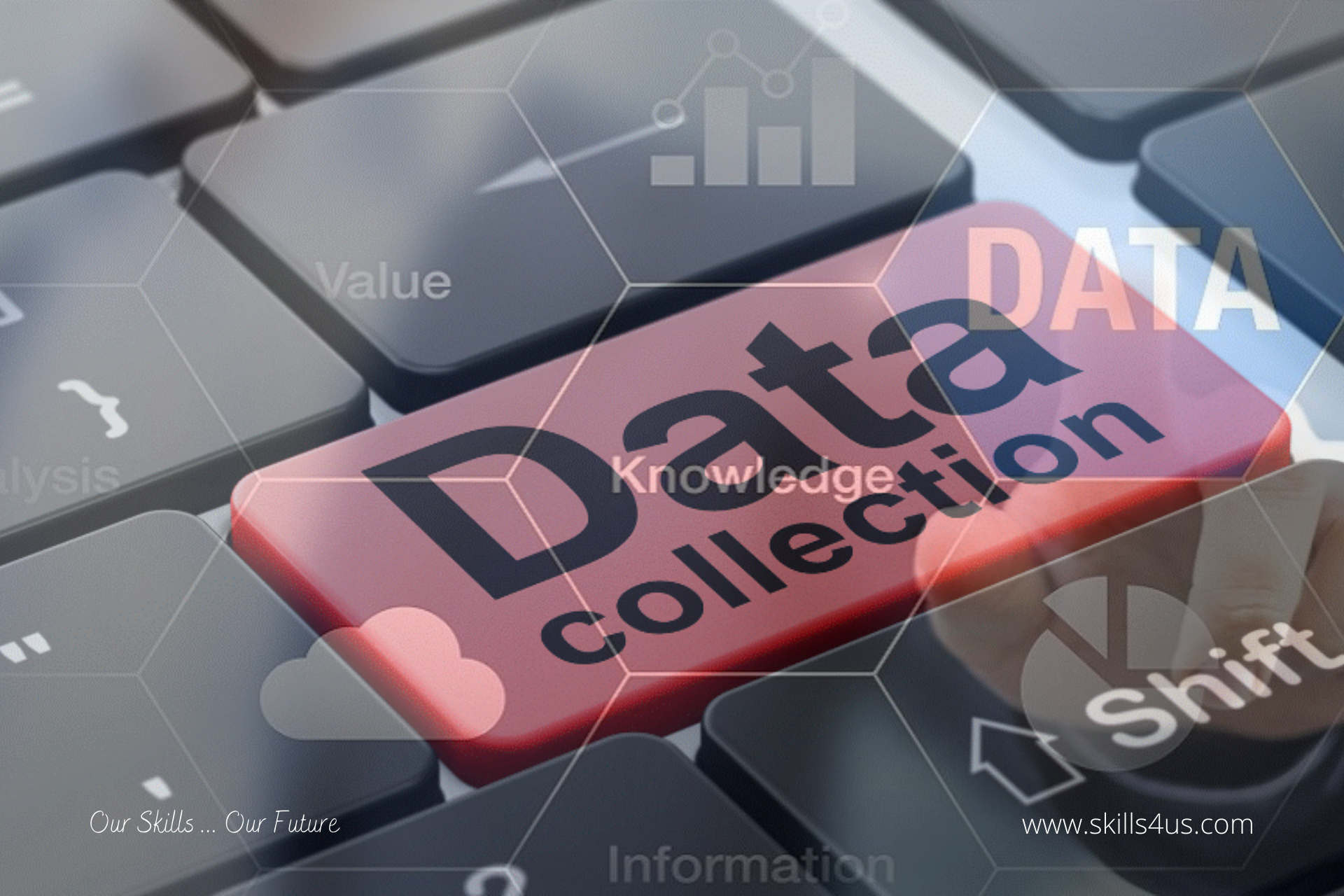
Data Collection Is An Integral Part Of Business Success And A Vital Necessity For Organizations
With technological and economic development, the amount of data available to organizations will increase. In addition, knowledge is power, information is knowledge, and data is information in digital form, at least as defined in information technology. Therefore, data is power and a vital necessity for organizations. As long as in the business world today, organizations rely heavily on data; this confirms the importance of collecting it with high accuracy and analyzing it to make informed decisions. Data collection is collecting, measuring, and analyzing accurate data from various relevant sources to find answers to business problems, solve them, evaluate results, and predict trends and possibilities.
Basic Steps in the Data Collection Process
1. Determine the data to be collected
The first step is to select the data to be collected. The topics to be covered by the data, the sources to collect, and the required data must also be chosen.
2. Set a deadline for data collection
A deadline for data collection must be set by establishing a transparent data collection strategy. Note that some forms of data can continue to be collected for the need and continuity of work.
3. Determine the data collection approach
It is crucial to choose the data collection technique that will serve as the basis for the data collection plan at this stage. In addition, the type of data to be collected, the period for obtaining it, and other factors that achieve the best collection strategy must be considered.
4. Data collection
Once the plan is complete, the data collection plan can be put into action and start collecting, keeping in mind to follow it up and monitor how it works. In addition, setting up a schedule for when we will check how the data collection is done can be helpful.
5. Analyze the data and apply the results
After that, analyzing the data and ranking the results is necessary. Note that the analysis phase is crucial because it turns unprocessed data into critical knowledge that can be applied to improve business plans and make informed decisions.
Data Collection Tools
- Interviews: This method is by far the most common method of data collection, in which questions are asked of a large sample of subjects through face-to-face interviews or mass communication such as telephone or mail.
- 2. Collecting projective data: Projective data is an indirect interview in which the interviewees are given an incomplete question, and they must fill in the rest using their opinions, feelings, and attitudes.
- 3. Delphi technique: In data collection, researchers use the Delphi technique by collecting information from a panel of experts. Where each expert answers questions in their area of specialization, the responses are compiled into a single opinion.
- 4. Focus Groups: The focus group technique is commonly used, in which a group of six to ten people is brought together, led by a mediator, to discuss a specific issue.
- 5. Questionnaires: Questionnaires are a straightforward method of data collection in which respondents are given a series of either open or closed questions related to the issue at hand.
Challenges During Data Collection
1. Data quality
Data quality is a top priority if technologies like machine learning work to collect it. The main threat to the widespread and successful application of machine learning is the poor quality of the data.
2. Data inconsistency
When working with different sources, it is sometimes possible for the data to be inconsistent. Thus, organizations heavily emphasize data consistency, keen to collect reliable data to support their analysis.
3. Data downtime
There may be brief periods when the data could be more reliable or better classified. Knowing that the lack of reliable data on time will significantly affect business. Frequently, schema modifications and migration issues are causes of data crashes. Thus data downtime must be constantly monitored and must be reduced through automation.
4. Data blurring
While the data flows quickly, some errors and blurring can occur in massive databases. In addition, the lack of clarity of data can cause several problems during reporting and analytics.
5. Duplicate data
Data sources are likely to be duplicated and overlap each other slightly. Thus, the potential for biased analytical results increases when there is duplicate data.
6. Increase data volume
While data-driven analytics and its benefits are emphasized, increasing the volume of data requires vigorous quality assurance. So other data quality issues become more serious, especially when dealing with streaming data and large files or databases.
7. Data inaccuracy
Only accurate data provides an accurate picture of the situation and cannot be used for good business planning. Data inaccuracy can be attributed to human error and data deviation or corruption. In addition, the integrity and accuracy of data can be compromised while it is being transferred between different systems, and the quality of the data may degrade over time.
8. Data loss
Most organizations use only a portion of their data, with the rest sometimes lost to data warehouses or dumped into data graveyards. Therefore, data loss leads to the inability to develop new products, improve services and simplify procedures.
9. Find relevant data
While collecting relevant data, some factors should be taken into consideration. For example, domain, demographics, and time. Note that irrelevant data makes studies outdated and cannot be analyzed effectively.
10. Determine the data to be collected
Deciding what data to collect is one of the most critical factors and should be one of the first factors while collecting data. Therefore, the topics to be covered by the data, the sources used to collect it, and the quantity required must be chosen. Failure to do so may lead to duplication of work and the collection of irrelevant data.
11. Dealing with big data
Big data has more complex and diverse structures, being generated from many sources in various formats at high-speed rates. Thus dealing with this type of data is one of the many challenges of data collection and is a critical step toward effective data collection.
In today’s data-driven landscape, data collection has become an integral part of business success and a vital necessity for organizations. Therefore, you must plan carefully before spending time and money to collect data. While saving time and resources, effective data collection strategies can help collect richer and more accurate data. By following best practices, the best results can be obtained.



